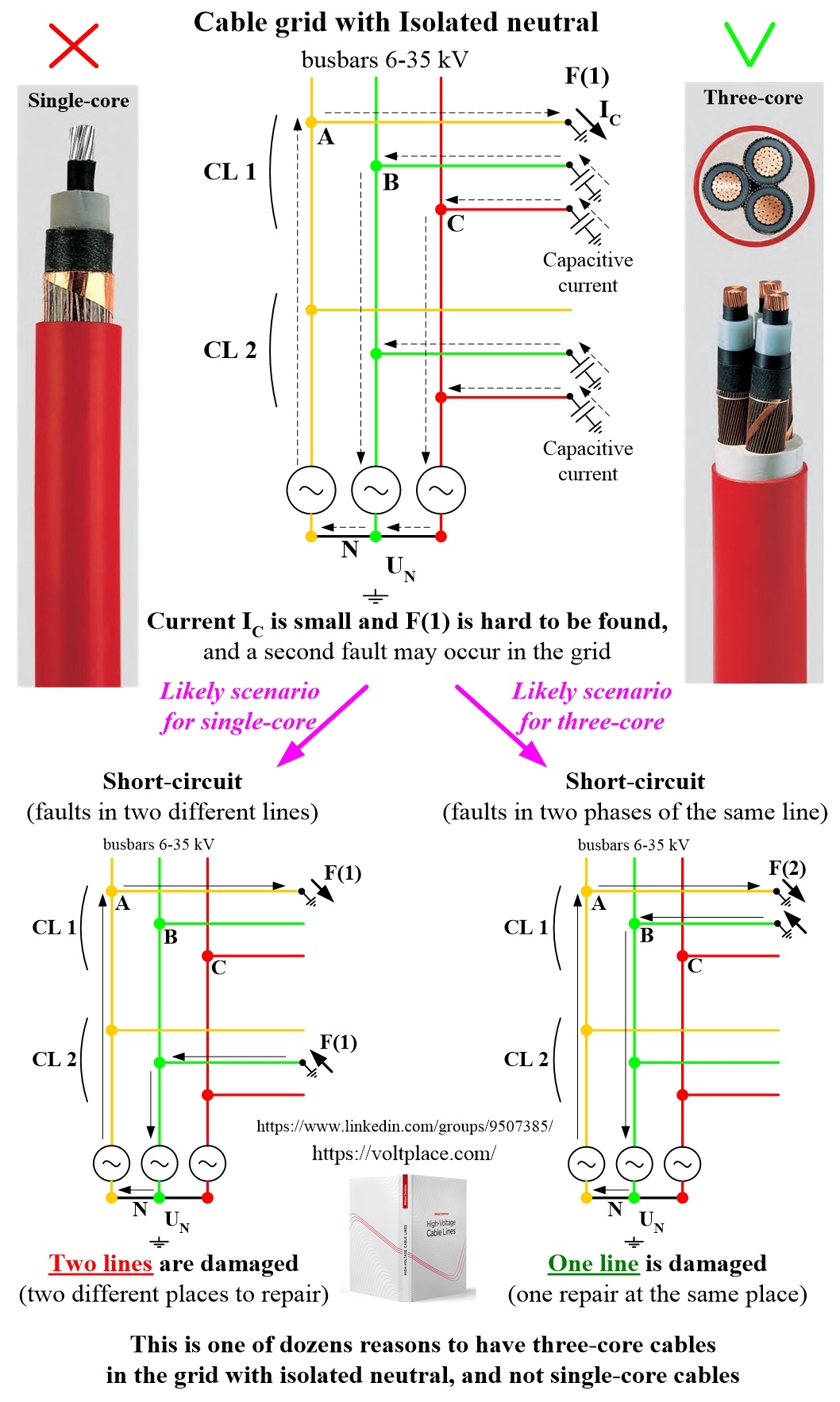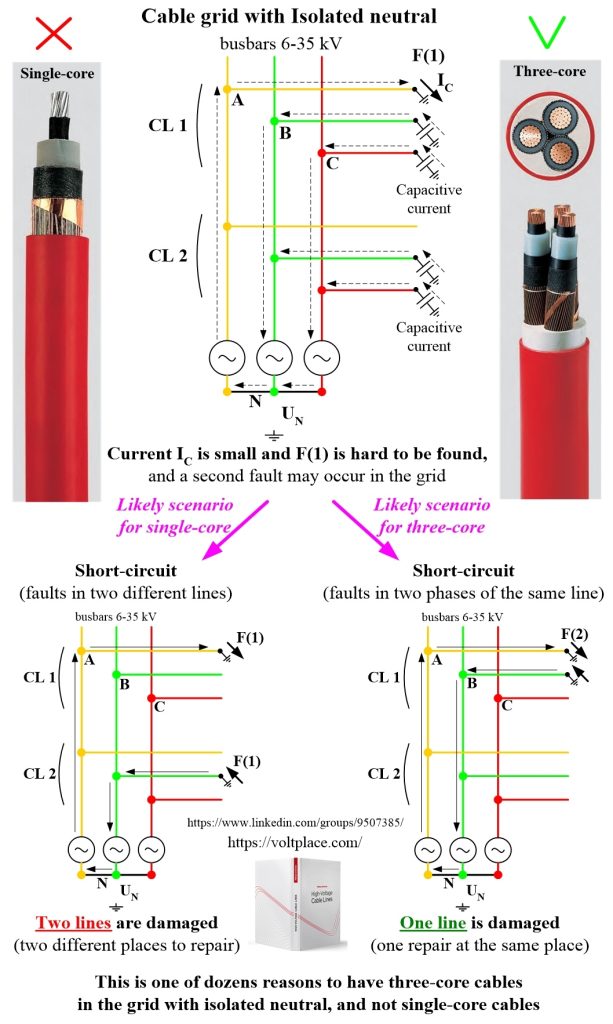
Grid with isolated neutral – which cable to use?
In 6-35 kV networks, many methods of neutral grounding are known. They differ in the magnitude of the ground fault current, the magnitude of the voltage increase on two intact phases, the ability to quickly search and selectively disconnect a damaged line, and so on. Let’s discuss a different question – how does the neutral affect the selection of the optimal cable design? And let’s do it using the example of an isolated neutral.
We know two basic designs of 6-35 kV cables: single-core and three-core (for cores with a cross-section of no more than 240-300 mm2). Let’s assume that consumers have power, for which it is enough to have core cross-section <240-300 mm2. In this case, we are free to decide whether we want to use a single-core cable or a three-core. But which one is better?

Suppose there is a ground fault F(1) in phase A of the cable line No.1. As is known, the current at the site of damage will be determined by the network capacitance and is not a short-circuit current. Such a capacitive current Ic rarely exceeds the load currents, and for protection it is difficult to determine on which line in the network such damage occurred. Some companies that produce protection claim that they are able to selectively identify a damaged line in a network with an isolated neutral, but operational experience suggests that this is not entirely true.
So, there is a ground fault, the voltage on the neutral N is equal to the EMF of the faulty phase A. This leads to the fact that the voltage of phases B,C increases from the normal phase to the linear (i.e. 1.73 times). And such a mode, which can also be accompanied by various overvoltages, can exist for a long time. As a result, an fault may develop – second damage will occur, in the initially intact phases B or C.
Scenario 1. If the network has single-core cables, then such cables of phases A,B,C are separated from each other by the outer sheath of cables or even by soil (when laying cables in a row). Therefore, it is most likely that the second damage will occur in phase B or C not in the same place of CL1, but in another – for example, on the CL2 (in the place of poor-quality installation of the joint etc.). As a result, there will be a double fault, which is a short-circuit, and two lines will be disconnected at once.
Scenario 2. If the network has three-core cables, then damage to phase A is likely due to the thermal effect of the arc will lead to damage to phases B,C on the same place of CL1. As a result, a two-phase or three-phase short-circuit will occur, which will be turned off by current protection. In this case, only one line will be damaged, and only it will have to be repaired.
Thus, we have one of the many reasons why it is better to use three-core cables rather than single-core ones in a network with an isolated neutral. There are many other reasons that are more important. All of them are described in Item 7.1.6 of the book.
